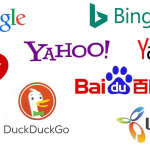How to Write a Meta Description
In the race to build a formidable online presence, most businesses have their Search Engine Optimization (SEO) efforts down pat. They employ efficient SEO strategies to secure a coveted position on Google’s front page.
But getting to the top of the search results is only half the battle. You still must convince prospects to click through to your website. How do you make your website stand out in a sea of sameness, given that everyone is giving it their best?
That’s what makes compelling meta descriptions a game-changer.
When properly executed, these one to two-sentence snippets can skyrocket your click-through rates (CRTs) and drastically grow your sales. Dig in and learn how to leverage the power of meta description for your business.
What is a Meta Description?
A meta description is a descriptive summary of your web page. It appears as a snippet below your page title and URL on the search results pages.

A properly written meta description informs the reader what the page is about and entices them to open the web page. Simply put, a laser-targeted meta description that’s optimized to perfection gives the reader a reason to pick your website.
As such, it helps to match your meta description to the search intent. Consider these snippets an elevator pitch. They should be compelling enough that people make the split-second decision to visit your website.
Is Meta Description Important for SEO?
Meta descriptions are essential for SEO but not in the traditional sense. For starters, search engines don’t consider them a ranking factor — at least directly.
Failing to include a meta description may not hurt your chances of getting to the front page of Google. But it may affect your chances of topping the search results page.
Google considers user behavior when ranking pages on the SERPs. If more people are clicking on your website, the search engine will reward your pages with higher rankings.
That’s because high click-through rates send a clear signal that readers value your content and find it helpful. Google is constantly tweaking its algorithms to match web users with the content that best suits their needs.
The search engines may bolden the keywords and other relevant information matching the search query in the meta descriptions. That helps readers click on the website that best meets their needs, growing your CRT.
In the latest update, dubbed Helpful Content Update (HCU), Google rewarded websites that met its trust signals with higher rankings while removing those that didn’t from the SERPS.
Does Google Rewrite Meta Descriptions?
Yes, Google rewrites meta descriptions—but only 70% of the time. Essentially, meta descriptions are merely suggestions. Google may auto-generate snippets based on the information on the page or user queries.
So why bother writing meta descriptions at all? Google generally rewrites meta descriptions if it believes they don’t satisfy the searcher’s intent. But that’s because you can’t possibly address all the angles surrounding a keyword — so it’s a good thing, too.

Still, Google is unlikely to rewrite the snippets for your high-volume keywords. Google will likely show your compelling and perfectly structured meta description for the most profitable keywords.
Therefore, writing excellent snippets for your highest-volume keywords gives you an edge. The compelling descriptions will appear as you wrote them and galvanize prospects into action.
How to Write Compelling Meta Descriptions
To the uninitiated, writing compelling meta descriptions can seem daunting. These tips can help you level up your snippets and grow your click-through rates.
Consider Your Audience
By the time you’re creating a blog post, you have incredible insights into your target audience. An accurate buyer persona helps you understand their needs, what makes them tick, and why.
Use this knowledge to create great meta descriptions that compel them to click on your title tags.
Ideally, your tags should clarify one thing — what that customer stands to gain by clicking through to your website.
Use Compelling, Benefit-Driven Copy
Always lead with the benefits when writing meta descriptions. Make it clear from the get-go how the reader stands to benefit by visiting your website.
Painful as it may sound, customers don’t really care about your brand. But they care about what your brand or products can do to make their lives easier, better, safer, or secure.
Naturally, the benefit depends on the problem and the keyword you’re addressing on the page. For instance, at Express Writers, we help clients crush their content marketing needs quickly and effortlessly. We make it abundantly clear on our home page.

The meta description also reflects this:
“Looking for high-quality content writing services? Look no further than Express Writers! Our team of skilled writers delivers engaging, SEO-friendly content…”
Keep Under 155 Characters
Meta descriptions are quintessentially elevator pitches. As such, you should keep them short and sweet. While there’s no technical limit when writing HTML meta descriptions, the sweet spot is under 155 characters.
Google usually truncates snippets based on the display space available across multiple devices. That’s about 105 characters on mobile and 152 on desktop.
An effective meta description leads with benefits to grab the reader’s attention. Keeping it under 155 characters keeps essential information from getting cut off.
Include the Target Keyword
It may seem counter-intuitive to include your target keyword since Google doesn’t use meta descriptions as a ranking factor. But having your primary keyword in the snippets pays off in droves.
Google often bolds the search phrases that effectively address the search queries to help them stand out in the search results. Pages with boldened keywords have higher click-through rates and can effortlessly boost your website traffic.

The bolding shows that your page explicitly addresses the prospect’s needs. It may, at least in the reader’s mind, double as Google’s seal of approval.
Write a Unique Meta Description for Each Page
You’re better off writing unique meta descriptions for each page on your website. In comparison, generic, duplicate meta descriptions are easy and convenient but can harm your CTR.
Unlike the generic version, laser-targeted snippets communicate value and earn Google’s trust signals to skyrocket your web traffic.
Writing a custom snippet can seem daunting when you have a large website, but it’s worth the effort. Apple has polished this approach into an art form.
When you use specific search phrases, such as buy iPhone, Apple uses the search intent to turn the meta description into a mini-sales page. The snippet entices you to learn about payment options, trade-ins, and carrier offers.

On the flip side, if you use a search phrase such as “Compare iPhones,” Apple understands that you need more information. The snippet lets you know that you can easily compare the features of the latest iPhone models on the page.

Writing a meta description for every page on your website lets you address search intent and reassure prospects that you have what they’re looking for.
Include a Call to Action
A meta description isn’t complete without a call to action (CTA). It’s not enough to tell a web user that you’ve got what they need — you need to tell them what they should do next. Direct them to visit your website — without using generic words such as click here.
Including CTAs in your meta description gets you more clicks. CTAs encourage people to take action.
By writing a custom snippet for every page on your website, you can match the primary keyword to the search intent. And also tailor the CTA to suit the readers’ needs.
Naturally, the CTA to use depends on the page’s content — blog posts will have different CTAs than product pages. With practice, you can perfect the art of writing concise and engaging meta descriptions that compel people to take action.
Effortlessly Grow Your Click-Through Rates
Persuasive and compelling meta descriptions are the ace in your sleeve when you need to skyrocket your CTR. They help your website stand out on the SERPs by telling your prospects that you truly understand their needs.
At Express Writers, we specialize in helping brands effortlessly meet their content marketing needs. Our team of crack-shot writers are skilled at things content marketing. From writing compelling blog posts and web content to address your customers’ needs to creating persuasive newsletters for your email marketing campaign, we’ll do all the heavy lifting.
Let us handle your content needs so you can focus on what really matters — growing your business. Contact us today for all your content marketing needs.
The post How To Write Meta Descriptions And Titles: A Nutshell Guide appeared first on Express Writers.













